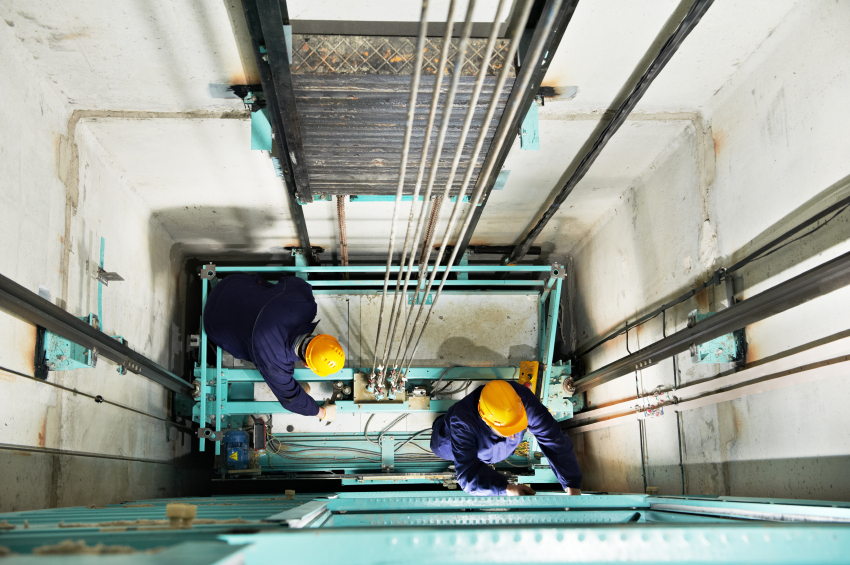The Science of Lifts
Contents |
[edit] How do Lifts Work?
A lift uses physical mechanisms that work together to lift or lower a car to various floors. The key components of a lift system include one or more car, a counterweight, an electric motor, metal cables, and various security systems.
Each part plays a particularly important part in the role of a lift system, and there are a lot of physical principles that are considered to ensure the lift stays functional and as safe as possible.
[edit] Conservation of Energy
This principle is one of the most widely known physical laws that is used. The law states that the total energy of a system that doesn’t interact with its surroundings remains constant. It is also referred to in the following statement:
“Energy is neither created nor destroyed; it transforms from one form to another.”
This would be, for example, converting electrical energy to kinetic energy within a motor. This law is particularly important in lift design, as it helps with the understanding of the raising and lowering of a lift car. Lift cars possess gravitational potential energy (GPE), which is the energy that an object possesses depending on how far the object is from Earth.
A lift that is high up has a greater GPE than if it was lower. Gaining this GPE must come from somewhere, and it comes from mechanical or electrical energy from the motor. To lift a car, more force needs to be applied than the car’s mass times by Earth’s acceleration due to gravity.
For example, lifting a 1,000kg car would require approximately 10,000N to lift using a single pulley, which is an immense amount of force.
[edit] The Physics of Counterweights
Counterweights provide a way to make life a lot easier when lifting a car to higher floors. Traditionally, counterweights weigh the same as when a lift is at half capacity. For example, if a car weighed 1,000kg and has a capacity of 1,000kg, the counterweight would weigh 1,500kg.
Because of this extra weight, it means that less force and, therefore, energy is needed to lift the car. For example, if the lift car is 3,000kg and the counterweight is 2,000kg, then 1,000kg is needed to be lifted as opposed to 3,000kg – an energy reduction of 66.7%.
Because of how they are implemented, it also means that the counterweight increases the acceleration that is required to raise the lift and decreases the acceleration that is required to lower the car, all of which helps to lower the amount of energy that is required by the motor.
As well as this, counterweights help to reduce the amount of energy that is used by the motor, which is beneficial in terms of increasing the environmental friendliness of lift systems. The goal is to ensure that the least amount of energy is used, whilst also maintaining the most efficient service possible.
[edit] Related articles on Designing Buildings
- A brief history of lifts over the years.
- Building engineering physics.
- Considerations When Installing a Residential Lift.
- Home lifts.
- Lifting platform.
- Lift motor room.
- Lift Standards: EN 81-20 and EN 81-50.
- Lifts and Escalators: A Quality Perspective.
- Lifts and Their Special Operating Modes.
- Lifts for buildings.
- Lifts for office buildings.
- Pulley.
- Smart elevators.
- The hidden mechanics of lift routing.
- The importance of service lifts.
- The world's fastest lifts.
--Nathan Massey 14:38, 11 Jul 2017 (BST)
Featured articles and news
The benefits of engaging with insulation manufacturers
When considering ground floor constructions.
Lighting Industry endorses Blueprint for Electrification
The Lighting Industry Association fully supports the ECA Blueprint as a timely, urgent call to action.
BSRIA Sentinel Clerk of Works Training Case Study
Strengthening expertise to enhance service delivery with integrated cutting-edge industry knowledge.
Impact report from the Supply Chain Sustainability School
Free sustainability skills, training and support delivered to thousands of UK companies to help cut carbon.
The Building Safety Forum at the Installershow 2025
With speakers confirmed for 24 June as part of Building Safety Week.
The UK’s largest air pollution campaign.
Future Homes Standard, now includes solar, but what else?
Will the new standard, due to in the Autumn, go far enough in terms of performance ?
BSRIA Briefing: Cleaner Air, Better tomorrow
A look back at issues relating to inside and outside air quality, discussed during the BSRIA briefing in 2023.
Restoring Abbotsford's hothouse
Bringing the writer Walter Scott's garden to life.
Reflections on the spending review with CIAT.
Retired firefighter cycles world to raise Grenfell funds
Leaving on 14 June 2025 Stephen will raise money for youth and schools through the Grenfell Foundation.
Key points for construction at a glance with industry reactions.
Functionality, visibility and sustainability
The simpler approach to specification.
Architects, architecture, buildings, and inspiration in film
The close ties between makers and the movies, with our long list of suggested viewing.
SELECT three-point plan for action issued to MSPs
Call for Scottish regulation, green skills and recognition of electrotechnical industry as part of a manifesto for Scottish Parliamentary elections.
UCEM becomes the University of the Built Environment
Major milestone in its 106-year history, follows recent merger with London School of Architecture (LSE).
Professional practical experience for Architects in training
The long process to transform the nature of education and professional practical experience in the Architecture profession following recent reports.

























Comments
It did not help me at all shouldn't have wasted my time on ya.
Sorry to hear, have you checked out the related articles section.